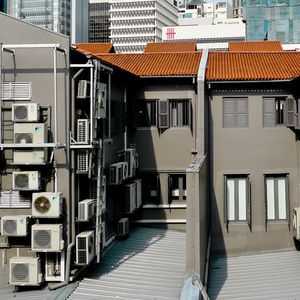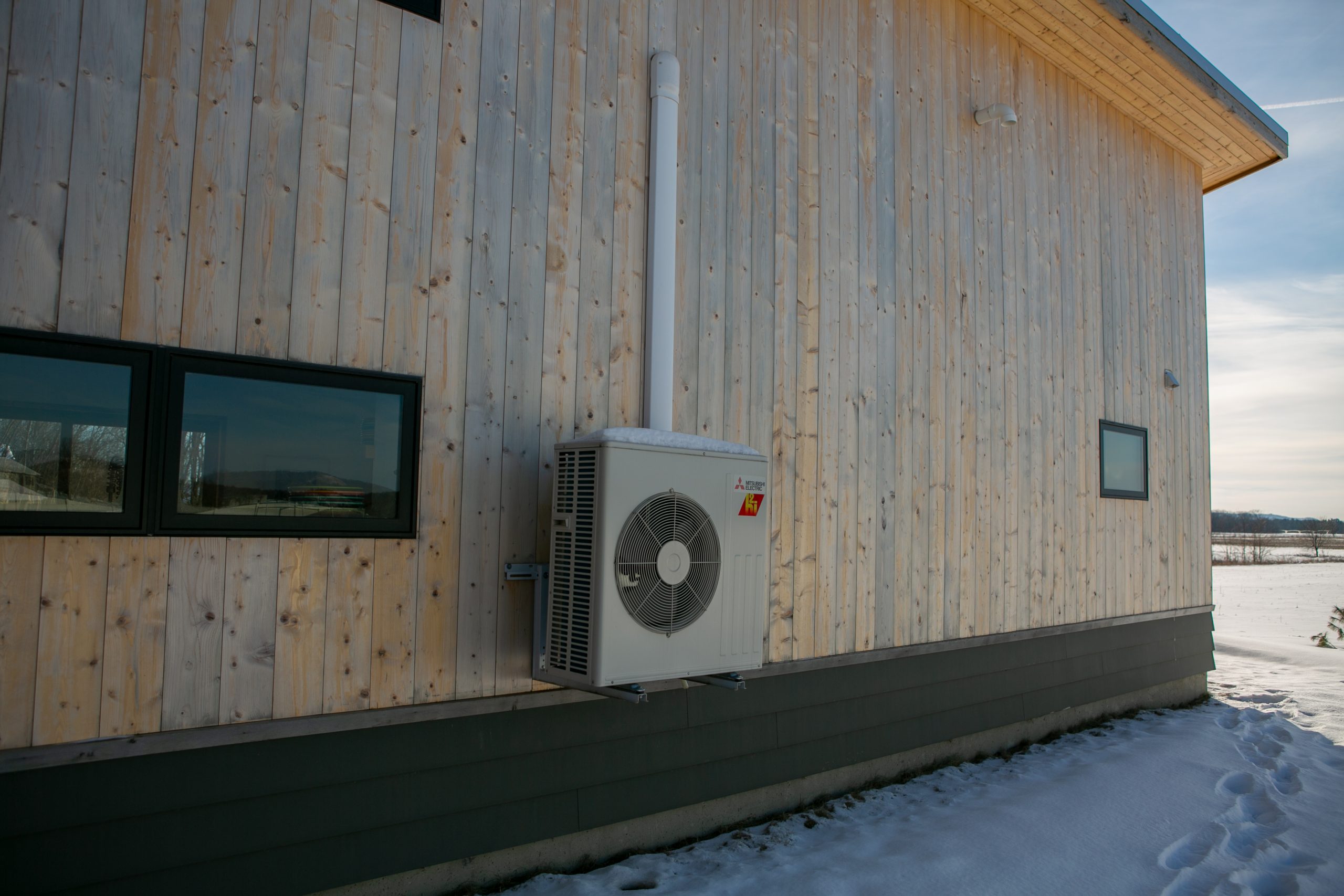
This article is part of a series on replacing fossil-fuel furnaces with ducted “vertical” and “multi-position” air handlers. Furnace-to-air handler retrofits represent a cost-effective way to decarbonize tens of millions of existing homes that already have forced-air ductwork. A successful retrofit requires careful design, installation, and commissioning. In a previous article, I discussed five categories of data needed for a good design: customer goals, building envelope, electric service and loads, ductwork, and physical space. In this article, I’ll talk about how data on the building envelope is used to calculate how much heating and cooling must be supplied to the house to keep it comfortable in both very cold and very hot weather.
The results of these calculations—the design heating and cooling loads—provide the basis for selecting heating and cooling equipment. Getting these calculations right is critical to a good result. If the calculations underestimate the amount of heating or cooling needed, the equipment selected may not maintain comfortable temperatures under extreme conditions. But if the calculations overestimate the amount of heating and cooling, the selected equipment will be oversized.
The problems with oversized equipment
Oversizing, which is far more common than undersizing, causes several problems. Oversized equipment costs more to purchase. It also cycles on and off more frequently, leading to efficiency losses, excess wear and tear, and temperature swings. In air conditioning mode, oversized equipment doesn’t run long enough to provide good dehumidification. It drops the air temperature rapidly, then shuts off, leaving the space with a cold, clammy feel.
The problems caused by overestimating design heating and cooling loads come into sharp focus when planning a furnace-to-air handler retrofit. The largest cold-climate heat pumps have nominal heating and cooling capacities of 3.5-4 tons (42,000-48,000 Btu/hr). This contrasts with residential natural gas furnaces (up…
Weekly Newsletter
Get building science and energy efficiency advice, plus special offers, in your inbox.

This article is only available to GBA Prime Members
Sign up for a free trial and get instant access to this article as well as GBA’s complete library of premium articles and construction details.
Start Free TrialAlready a member? Log in















6 Comments
Another excellent and highly relevant article.
In jurisdictions that don't require Manual J for a permit, would it make sense to use the measured load (per Dana's article) as the primary sizing tool, with the calculation as a check, rather than vice versa? And should we perhaps even lobby for that to be an approved alternative in the jurisdictions that do have such a requirement?
One thing that might need clarification is the 1.4 factor. My understanding is that the recommended sizing is in the range of 1.0 to 1.4X the calculated load. Some people instead treat 1.4X as the recommended size, and choose the equipment that is as close as possible to the 1.4 X size, even if that means it's a little bigger than 1.4X. Or maybe even treat 1.4X as the minimum equipment size.
Thanks, Charlie. I do think the measured load approach is inherently better if high quality usage data is available. My utility only reads meters every other month, so the data is pretty low-res. I'm hoping that at some point we'll have access to smart meter data, which would allow us to do this kind of analysis with a lot more detail. Home energy monitors and smart thermostats could also be used in this way.
I'm going to talk about the 100-140% range in more depth when I get to Manual S and equipment selection. I believe that most of the time closer to 100% of design load is best for a heat pump system without aux heat; there will be cases when sizing the heat pump at 90% of design load and counting on aux resistance heat for the rest may be the best strategy.
One of my biggest issues with equipment selection is that, more often than not, it comes to play the "since is variable speed it's OK to oversize, just in case you need it", even by folks that know better. 😈
Articles like this series are why I subscribe to GBA.
I am hoping to do exactly this kind of retrofit, and happened to find the latest article in the series the night before a local HVAC contractor is coming out to estimate replacing my 25 year system (the gas furnace is rated at 80,000 BTUs, in climate zone 2B, for 900 square feet!). I'm going to wait and see if a ducted mini-split is something he suggests as an option... if not, and he doesn't have a cogent reason why not, I'll keep looking for HVAC contractors.
I do have one question. Is the data used for local design temperatures up to date with the measurable climate change that has already occurred, not to mention the continued warming guaranteed to occur over the lifetime of the equipment? If you check out the new "normals" that NOAA has published(http://www.ncei.noaa.gov/products/us-climate-normals), they show maximum temperatures in my area are 2.6 degrees Fahrenheit warmer if you use the 2006-2020 data set compared to the 1981-2010 set. My city's summer design temp is 109, which I think means we should have 3-4 days a years hotter than that. Last summer we had 8 days over 11o. I'm all for designing aggressively but it needs to be based on current data. NOAA has starting issuing 15-year normals in addition to 30 year normals for exactly this reason.
I think this is a really good point. Using recent data rather than old data is a good step, but we should be also looking at projections of where it will be after however many years the equipment will last. Fortunately (?) mechanical equipment rarely lasts more than perhaps 25 years, so we don't need to estimate the climate 50 years hence.
Regarding your 80,000 BTU furnace for 900 sq. ft. in zone 2B, perhaps the initial intent was to create a 900 sq. ft. lumber drying kiln. I believe that's about enough to dry 20,000 BF of lumber in a month.
For all homes I design, I use the ENERGY STAR Certified Homes Design Temperature Limit Reference Guide (2019 Edition). Scroll down to AZ, then to Pima Co.... 109/22 https://www.energystar.gov/sites/default/files/asset/document/Design%20Temperature%20Limit%20Reference%20Guide%20%282019%20Ed%29%20-%20ENERGY%20STAR%20SFNH%20Rev11_MFNC%20Rev02.pdf
Log in or become a member to post a comment.
Sign up Log in